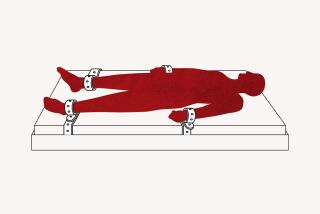Auto Makers Overcome Their Lack of Restraint
- Share via
Automotive head restraints--often and erroneously referred to as headrests--have been an inferior part of most vehicles’ safety packages for years. But the latest testing by the Insurance Institute for Highway Safety finds they’ve come a long, long way.
The research group, funded by the insurance industry, published its first ratings of head restraints in 1995. Its latest review, which covers the 2001 model year, rated the restraints in 53% of passenger vehicles tested as having either “good” or “acceptable” crash performance. In 1995, only 7% earned such ratings, and as recently as 1999 only 32% got the top ratings.
The institute assesses how well a restraint meets the requirements for an average adult male by taking two key measurements. The top of a restraint should be at least as high as the top of the seat occupant’s ears, institute researchers say, while the backset--the distance from the back of the occupant’s head to the front surface of the restraint--should be as small as possible.
Only nine of the vehicles rated this year have active head restraints, which are designed to move into a high-and-close position behind the seat occupant’s head in the event of a rear collision. These automatic restraints all received the “good” rating.
“Auto makers are finally getting the message,” said Adrian Lund, chief operating officer for the institute, based in Arlington, Va. “In 1995, unless you were short, it was hard to find a car with a head restraint high enough to provide protection. But now even taller people have a good chance of getting head restraints that will protect them.”
A list of the vehicles tested and their ratings can be found on the institute’s Web site at https://www.highwaysafety.org.
Going forward, the institute plans to start a program of dynamic crash testing of head restraints next year, spokesman Russ Rader said. The institute is developing a system using a test sled--fitted with the seat and restraint being evaluated and a crash dummy--to simulate the effects of rear-end collisions at different speeds.






